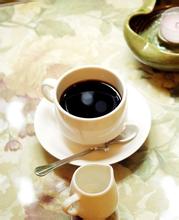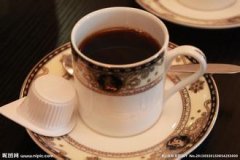The Origin and Development of Fine Coffee beans of Cabaret Coffee processing Plant in Kenya AA Klinaga production area

According to SL Laboratory botanists, SL28 and SL34 are genetic variants. SL28 has a mixed lineage of French missionaries, mocha and Yemeni tibica. SL28 was bred to produce high quality, pest resistant coffee beans in large quantities.
Although SL28 did not yield as much as expected, the copper-leaf color and broad bean-like beans had great sweetness, balance and complexity, as well as notable citrus and dark plum characters. SL34 and SL28 taste similar, except for complex acid, and a good sweet finish, the taste is heavier, richer and cleaner than SL28. SL34 has French missionary, bourbon, and more Tibica pedigree. The beans are similar in appearance to SL28, but are better able to adapt to sudden heavy rain. It is these two important varieties that lead us to the unique Kenyan style: intense fruit acids, rich flavors and beautiful balance.
Flavor Description: Intense dry and wet aromas of lemon and plum. When lightly roasted, it has a variety of amazing aromas such as floral, lemon, etc. It also has sweet and sour juicy flavors such as grapefruit green tea and citrus juice. A little deeper roasting, it has various flavors such as honey and black plum. The finish is a lot of sweet and sour flavors of green tea.
This Kenyan fish comes from Kabare Cooperative's Kong Fish Processing Plant in Kenya's Klingaga producing area. It adopts Kenyan double washing method. It grows in Manyata-Embu County on the eastern hillside of Kenya Mountain Range from 1550 to 1750. The varieties are Kenya's classic SL28 and SL34. In addition, the local temperature difference between day and night is large, and Kenya's red phosphoric acid soil makes sour and sweet become the main flavor tone of Kenya.
The fresh coffee of this batch of Kongyu AA was picked and processed by 250 farmers in Kongyu Processing Plant under Kabare Farmers Cooperative. Coffee is peeled, fermented and washed in nearby river water and dried on African drying beds. Each harvest season, farmers will process nearly 300 tons of fresh coffee. Once processed, the coffee will be auctioned off every Wednesday in Nairobi and, once selected by the legal exporter, shipped to consumer markets around the world.
In every kenya before us, we especially like to pursue those strong and angular fruit acids, and this kenya, let me feel gentle, like facing the sea, there is a breeze feeling.
Factory Name: Qianjie Coffee Factory Address: Baoan Qianjie 10 Qianjie Coffee Shop, Yuexiu District, Guangzhou Contact: 020-38364473 Shelf Life: 90 Net Content: 227g Packaging: Bulk Coffee Bean Ripe Degree: Coffee Cooked Bean Sugar Free Origin: Kenya Coffee Type: Other Roasting Degree: Mild Roasting
Country: Kenya
Grade: AA
Production area: Krinagar production area
Altitude: 1550-1750 m
Soil: red phosphoric acid soil
Treatment: Kenyan double washing treatment
Varieties: SL 28, SL 34
Treatment plant: Orefish treatment plant
Producer: Kabare Cooperative
Flavors: Grapefruit Green Tea, Citrus, Black Plum, Mulled Pot
Kenya, located in East Africa, is one of the major coffee producing countries, with more than six million people engaged in the coffee industry, mostly in the form of a combination of small farmers and cooperatives.
Coffee trees in Kenya are mostly planted at an altitude of 1400 - 2000 meters, and their growth areas include Ruiri, Thika, Kirinyaga, Mt. Kenya West, Nyeri, Kiambu and Muranga. It is dominated by the foothills of Mt.Kenya and Aberdare.
In Kenya there are many growing regions that strive to preserve native forest ecosystems, protect natural gene pools, support the reproduction of wild coffee varieties, and breed diverse coffee trees.
In 1930, the Kenyan unique varieties SL28 and SL34, which were bred and named by Scott Laboratories, were born in such a good environment.
Important Notice :
前街咖啡 FrontStreet Coffee has moved to new addredd:
FrontStreet Coffee Address: 315,Donghua East Road,GuangZhou
Tel:020 38364473
- Prev

Panamanian boquet contains 70% roses, summer flowers, butterflies, boutique coffee bean flavor, taste, aroma, description, Jane
Flavor: tea, honey, berries, classic jade manor Geisha taste so in the land of Pokuit, there is a very cost-effective bean. And has a very beautiful name Flower Butterfly. She has 40% of Rosa's high-quality pedigree, composed of Rosa, Kaddura and Kaduai, planted in the Baru volcano region of Pokut, and grows in fire at an altitude of 1600 meters.
- Next

History of Origin and Development of imported Micro-batch Fine Coffee beans in Ethiopia washing Sidamo G1 Honey language
The Oromia region is one of the sources of coffee in the world, and its native Oromo is the first person in the world to use coffee as a food, dating back to the 5th century AD. Oromia is located at about 3-15 degrees north latitude and 33-40 degrees longitude. The region is famous for its primordial plant species and species diversity. This is where coffee was born. Yes
Related
- Detailed explanation of Jadeite planting Land in Panamanian Jadeite Manor introduction to the grading system of Jadeite competitive bidding, Red bid, Green bid and Rose Summer
- Story of Coffee planting in Brenka region of Costa Rica Stonehenge Manor anaerobic heavy honey treatment of flavor mouth
- What's on the barrel of Blue Mountain Coffee beans?
- Can American coffee also pull flowers? How to use hot American style to pull out a good-looking pattern?
- Can you make a cold extract with coffee beans? What is the right proportion for cold-extracted coffee formula?
- Indonesian PWN Gold Mandrine Coffee Origin Features Flavor How to Chong? Mandolin coffee is American.
- A brief introduction to the flavor characteristics of Brazilian yellow bourbon coffee beans
- What is the effect of different water quality on the flavor of cold-extracted coffee? What kind of water is best for brewing coffee?
- Why do you think of Rose Summer whenever you mention Panamanian coffee?
- Introduction to the characteristics of authentic blue mountain coffee bean producing areas? What is the CIB Coffee Authority in Jamaica?

